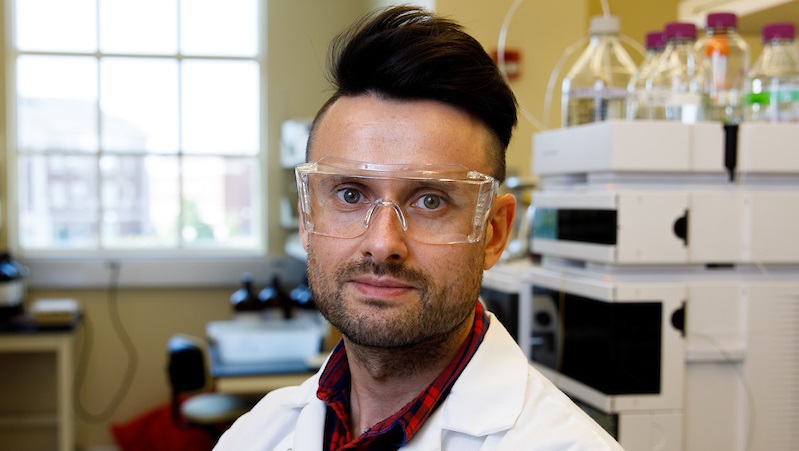
TUSCALOOSA, Ala. – A lab at The University of Alabama has shown a compound found in a common shrub in India exhibits neuroprotective effects against Parkinson’s disease characteristics induced by an herbicide in fruit flies.
The results of the study, published today in the journal Communications Biology, highlight the need to study and understand how naturally occurring compounds in plants can play a role in potential therapies for neurodegenerative diseases that have so far proven difficult to treat, much less cure, according to its authors.
“These diseases are very complex and multifactorial, so the more we can learn about them, the more effective therapies can become,” said Dr. Urmila Maitra, assistant researcher in biological sciences and lead author of the study. “Multi-target drug development is the next step, and that is why we are not targeting one thing. We found this compound can hit multiple pathways associated with the progression of Parkinson’s disease. We have a long way to go, but it is a very exciting start.”
Efforts are underway to partner with other institutions to test the promising neuroprotective qualities of the compound in mice once funding is secured, a crucial next step toward developing possible therapies for humans.
“In the future, there may be preventive treatments developed which could be administered to individuals susceptible to developing Parkinson’s disease,” said Dr. Lukasz Ciesla, assistant professor of biological sciences and senior author on the study, whose lab led the experiment.
Parkinson’s disease, a neurodegenerative disorder, is estimated to afflict between 7 and 10 million people worldwide with approximately 60,000 Americans diagnosed each year. Current therapies include treating the symptoms of the disease such as tremors and involuntary shakes, but there is no cure or treatment to halt the disease’s progression. By the time a Parkinson’s patient begins to outwardly exhibit symptoms of the disease, they have likely been losing function in the brain for years.
Although causes of the disease are uncertain, environmental factors can play a role for some people. Paraquat, an herbicide used mostly to kill weeds in the agricultural industry, is known as a possible contributor to developing Parkinson’s.
In the study, researchers fed the flies either a sucrose formula with or without GardeninA, found in the gum of the medicinal plant, Gardenia resinifera Roth, which goes by many names in the Indian subcontinent with one of the most common being Dikamali. In English, it is referred as Brilliant Gardenia.
Paraquat was then used to induce Parkinson’s symptoms in Drosophila, or fruit flies. The researchers found that the GardininA molecule protected against the loss of neurons associated with the onset of Parkinson’s disease. The flies lived longer with delayed mobility defects, too.
Study of how the protection worked revealed the molecular mechanisms of GardeninA neuroprotection.
GardeninA is part of a class of molecules called flavonoids, present in plants. Broad scientific consensus shows flavonoids are part of a diet rich in fruits and vegetables, which is protective against age-associated chronic diseases such as Parkinson’s disease and in delaying mortality. For instance, GardeninA is structurally similar to flavonoids found in the peel of citrus fruits.
However, not much is known of how flavonoids work in the body, even though a popular, but scientifically suspicious, theory is they act as free-radical antioxidants in the body, protecting cellular activity from harmful effects.
Part of the work of Ciesla’s lab is screening flavonoids for neuroprotective effects, and, for this study, they were able to test scores of different types quickly in the fruit fly model. GardeninA stood out.
“It proved to be the most neuroprotective, and is singled out because of how potent it was compared to the other molecules,” Ciesla said.
Understanding more about how flavonoids work at the cellular level can help develop potential therapies to treat or prevent neurodegenerative diseases and inform diet as preventive medicine, he said.
The work was supported by the Alabama Life Research Institute at UA and the American Society of Pharmacognosy.
Contact
Adam Jones, UA communications, 205-348-4328, adam.jones@ua.edu
